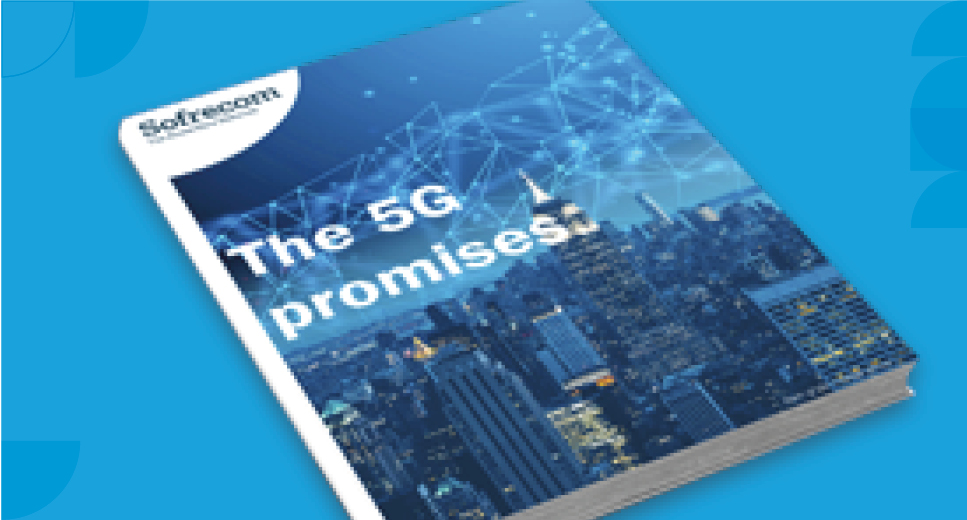
L’épidémie de COVID 19 a mis un coup d’arrêt aux tests et déploiements 5G dans de nombreux pays. L’écosystème nécessaire à son développement, que ce soit la production de smartphones 5G, d’équipements réseaux mais aussi l’attribution des licences, est actuellement en pause. Les effets de la crise sur l’économie mondiale pourraient également affecter tant les capacités d’investissement des opérateurs que des clients finaux.
Nicolas Jaupitre

5G promises speeds and service quality that could rival those offered until now only by fiber optics. So much so that some operators are wondering whether it is wise to invest in expensive and complex fiber deployments when 5G is just around the corner. Is it realistic to prefer 5G over fiber?
Availability, speed, service quality, technical implementation, and monetization of 5G are all factors that must be carefully compared to define the best strategy.
"Tomorrow" is not before 2021 or 2022 at the earliest
NSA (non-standalone) 5G deployments have already begun in several pilot cities and regions across many countries. However, it’s important to note that the most significant changes will only come with the SA (standalone) version of 5G, which is still being standardized by the 3GPP. A report from network equipment provider ENEA, published in March 2020, indicated that fewer than 50% of operators planned to launch standalone 5G within two years. At this stage, there are no clear details about the extent of 5G coverage when these launches occur.
And those estimates were made before the crisis.
The COVID-19 pandemic brought a halt to many 5G trials and deployments worldwide. The ecosystem needed for its development — including the production of 5G smartphones, network equipment, and spectrum licensing — is currently on pause. The global economic impact of the crisis may also affect the investment capacity of both operators and end users.
Very high speeds... in theory
Fiber optics can theoretically offer speeds of several Gbit/s (Gigabits per second): today’s advertised commercial speeds mostly range from 100 Mbit/s to 1 Gbit/s for download and 50 Mbit/s to 250 Mbit/s for upload. Unlike copper wires and xDSL technologies, which suffer significant attenuation over a few kilometers, fiber optics maintain signal strength over long distances, allowing operators to guarantee a minimum speed.
5G promises speeds above 1 Gbit/s, reduced latency, and high availability. Tests have hinted at what the future could look like: Qualcomm reached a median download speed of 1.4 Gbit/s for web browsing; Verizon and Ericsson, in turn, tested the download of a 4K video in a moving car and achieved speeds over 6 Gbit/s. As for latency, it could theoretically drop to 1 millisecond.
So one might assume that 5G will far surpass the capabilities of fiber optics. However, it’s important to remember that 5G speeds, like any wireless technology, depend heavily on variables requiring regular network optimization, such as the number of users per cell at a given time and signal quality. While FTTH allows for guaranteed minimum speeds, doing so with 5G will likely be more difficult. Business clients, for whom consistent high speed is critical and mobility is not essential, will still prefer the reliability of fiber.
Existing network coverage likely won’t be enough for 5G
Fiber optic deployment inevitably involves significant, long, and costly civil engineering work. This alone could make 5G more attractive than fiber.
However, operators still don’t know which frequencies they’ll be allocated. With high frequencies (which have short range), the 5G network will require substantial densification to meet its speed promises. Building new antennas or deploying rooftop equipment requires authorizations that are increasingly difficult to obtain from municipalities concerned about the health impact of mobile waves. For example, Paris adopted a charter in 2017 to reduce the maximum authorized signal levels for relay antennas by 30%.
The impact on costs and delays currently prevents us from saying that the business case is necessarily in favor of 5G.
However, 5G presents a cost-effective and more easily deployable alternative where fiber is unavailable — such as suburban areas of certain countries or for temporary business needs, like construction sites.
The monetization challenge
As with any major network deployment or investment, the question of monetization arises: Deploy 5G, yes — but for what purpose? And for whom?
By the end of 2019, the GSMA had already identified over 100 5G-compatible devices, and the number continued growing in 2020. Nevertheless, most devices on the market were still not 5G-ready, meaning that any 5G plan rollout must be accompanied by a mass device upgrade. Will these devices be affordable enough to convert the masses, or will operators need to subsidize them?
As for use cases, will downloading a movie in seconds or playing online games with imperceptible latency be compelling enough to sway users who may already be satisfied with 4G for their needs? One might doubt their willingness to pay more for what may be perceived as only marginal improvements.
In the B2B sector, key 5G promises include IoT and autonomous vehicles. However, the value operators can extract solely from connectivity is limited. Beyond those use cases, there are applications that demand high speeds and low latency: video conferencing is one, but how often is it used on the go? Consider virtual reality apps enabling technicians to work faster in the field, or services that let remote teams share and edit plans or photos in real time. Will these services generate enough business volume to justify investments and create value for operators?
5G will deliver on its promises only when combined with fiber
Even if 5G is ultimately selected as the ultra high-speed access technology, antennas will still need to be connected via fiber optics to ensure high speeds and low latency up to the network core — and thus deliver the promised quality of service. The question of choosing between 5G and fiber only arises for the "last mile."
This is not about questioning the potential of 5G: the technology will enable new uses requiring ultra-high speeds, low latency, and differentiated service quality. But we should not expect 5G to meet every use case or fully replace fiber optics as an access technology everywhere. A solid network strategy must therefore consider the advantages and limitations of each technology, the real needs of populations, and the market potential of each geographic zone — and combine them wisely to achieve the best possible "customer needs vs. profitability" ratio.




